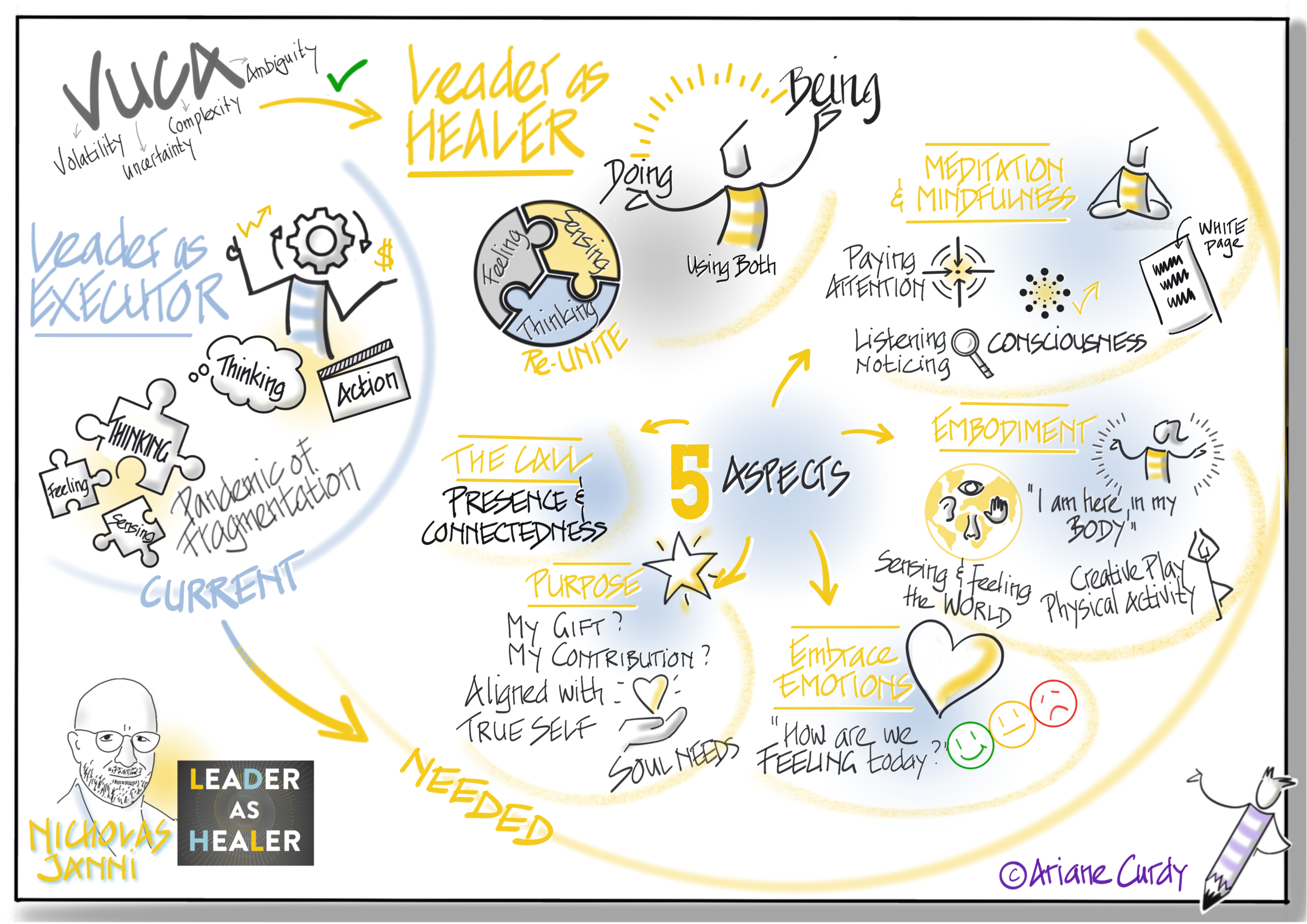Leadership is not a title. It’s a mindset in action.
Peter Drucker defined the manager’s role through five essential tasks:
- Set objectives
- Organize work
- Motivate and communicate
- Measure performance
- Develop people – including yourself

But leading goes beyond managing.
Leadership means working with and through people to inspire movement, purpose, and results.
It’s not about authority—it’s about influence.
“ The only definition of a leader is someone who has followers.”
– Peter Drucker
What Effective Leaders Do
Great leaders aren’t born—they’re built. They cultivate presence, awareness, and communication that resonate.

1. They lead from authenticity
Self-awareness fuels credibility.
When actions align with values, people follow with trust.
Leadership presence begins with integrity—being real, not perfect.
2. They are fully present
Leadership happens in moments of genuine connection.
Giving people your full attention creates trust, motivation, and impact.
Presence also means adaptability—being responsive in fast-changing contexts.
3. They communicate with purpose
Leadership is communication—in every conversation, not just on stage.
It’s how we listen, speak, move, and show up.
Clear, authentic, dynamic expression is what inspires people to engage and act.
The Power of Embodied Leadership
Leadership is not just what you say, but how you show up. Like actors, effective leaders use voice, body, and presence to connect and inspire.
With tools from theatre and improv, they learn to stay grounded, adapt on the spot, and tell stories that resonate.
These are not theatrical tricks—they are essentail leadership tools for leading in today’s complex world.
“Eighty percent of success in life is showing up.”
– Woody Allen
Leader as Healer
This approach aligns closely with Leader as Healer by Nicholas Janni, which invites leaders to move beyond performance-driven models and embody deeper presence, emotional intelligence, and authenticity. Janni argues that true leadership integrates mind, body, and heart—exactly what embodied practices cultivate.
Leading becomes not just about doing, but about being—fully attuned to self, others, and the moment.

→ From Knowing to Inspiring: Leading others is about building trust, engaging minds, and moving hearts.
It’s the art of bringing people together around a shared vision—and empowering them to make it real.
And it all starts with showing up—authentically, intentionally, and fully present.
* Peter F. Drucker (1909 – 2005), Pioneer of modern management, “The Essential Drucker”, 2001
* Heywood “Woody” Allen, US_American director, writer, actor, and comedian
* Nicholas Janni, “Leader as Healer”, 2022



